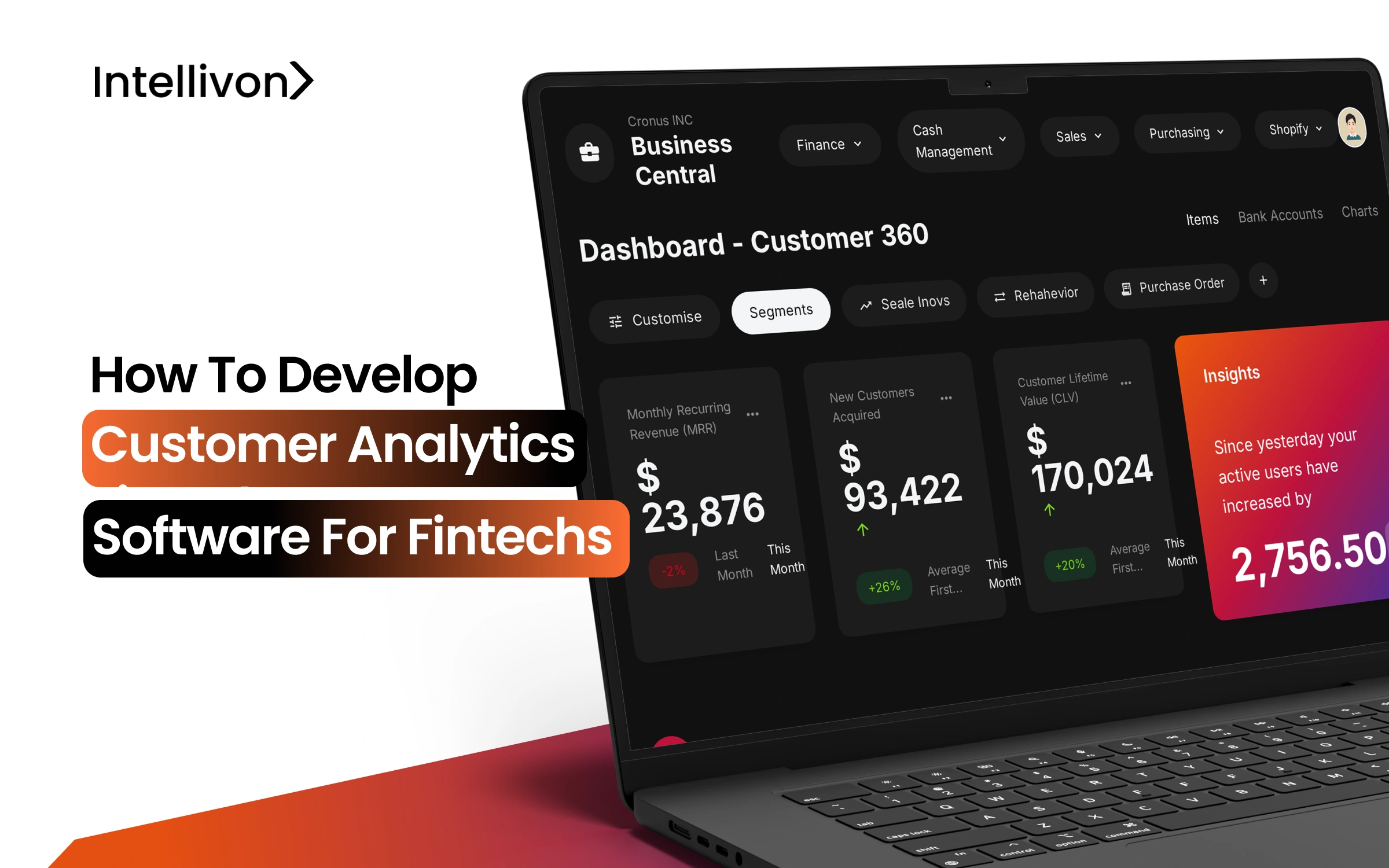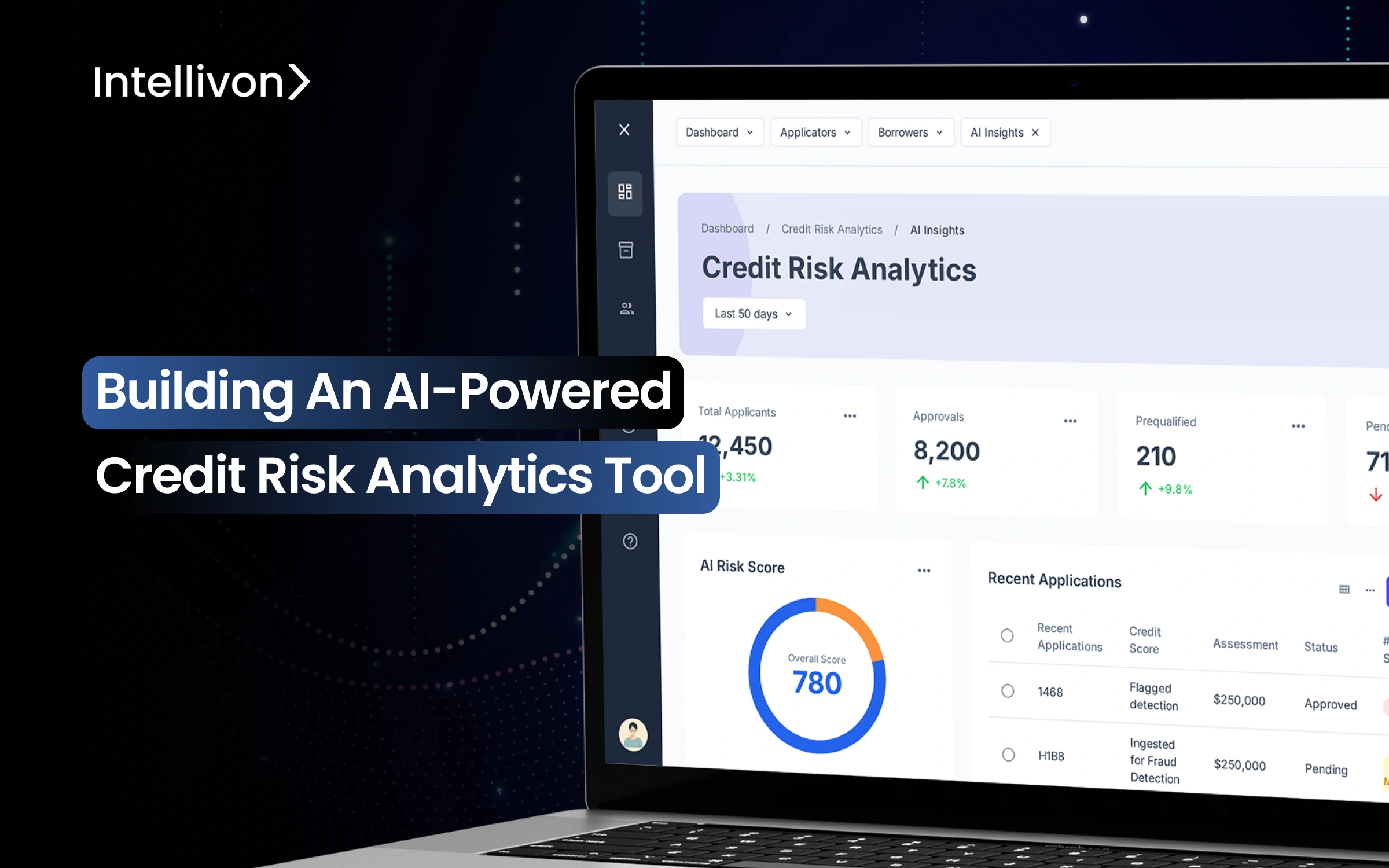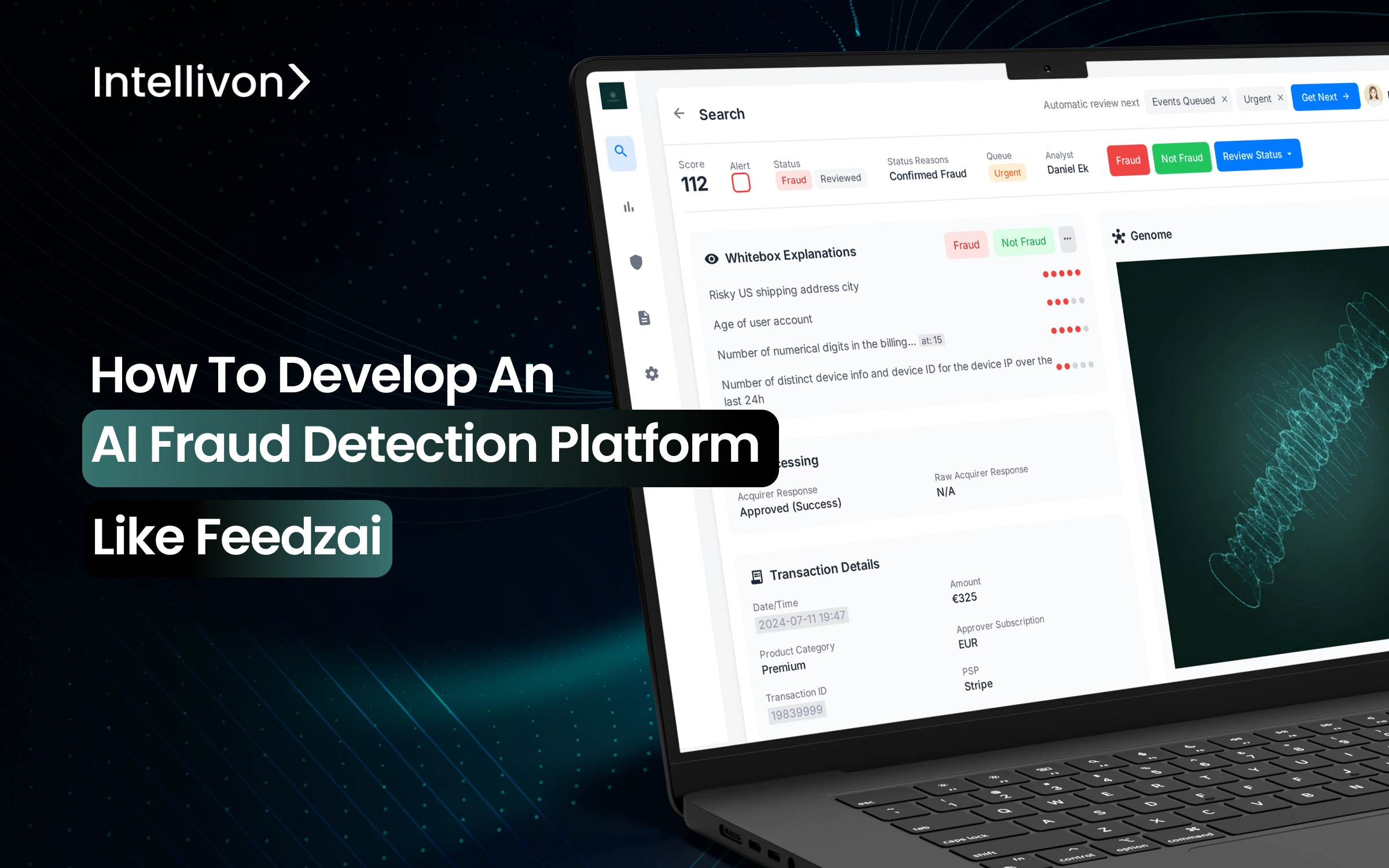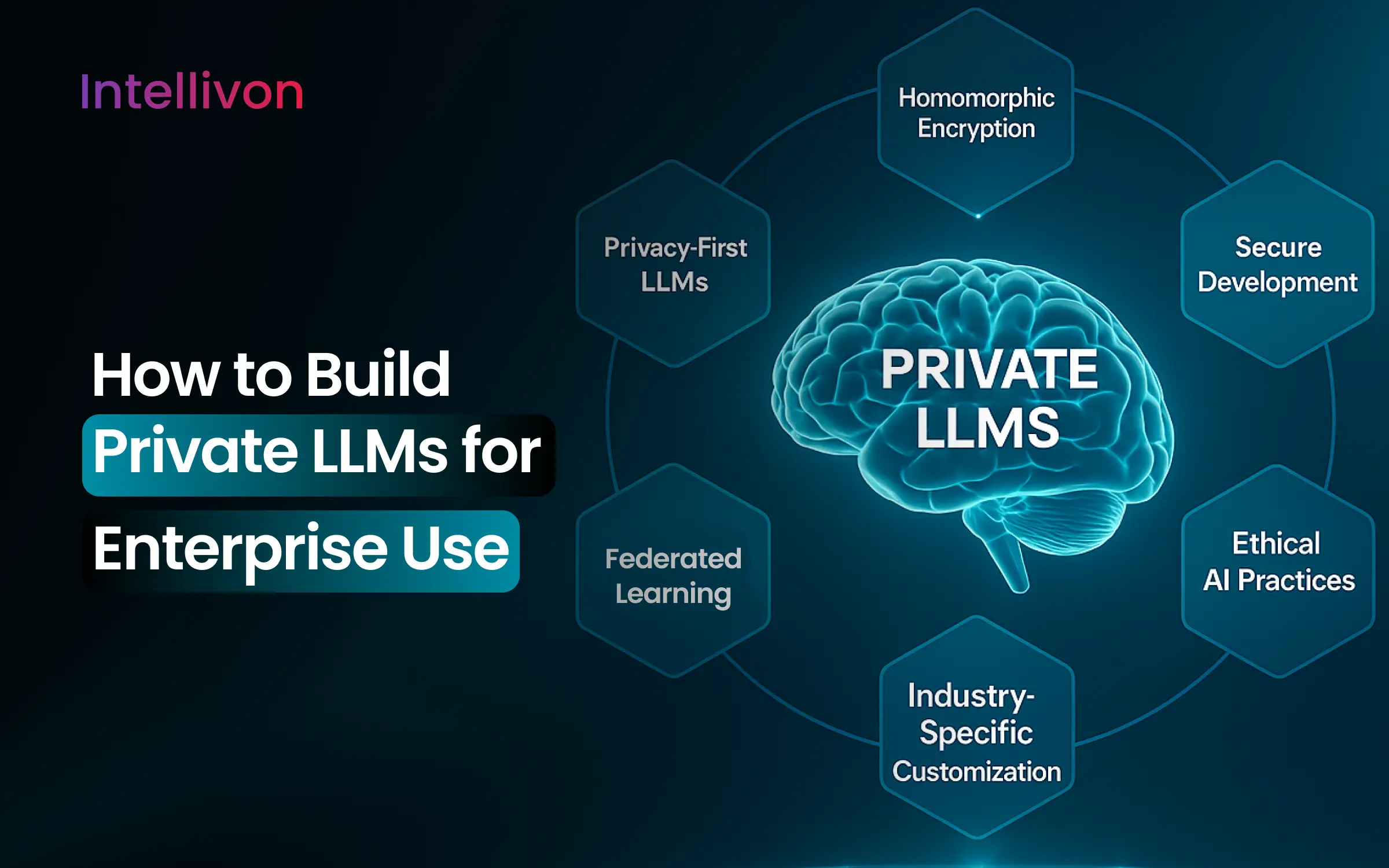How to Develop Customer Analytics Software for Fintechs
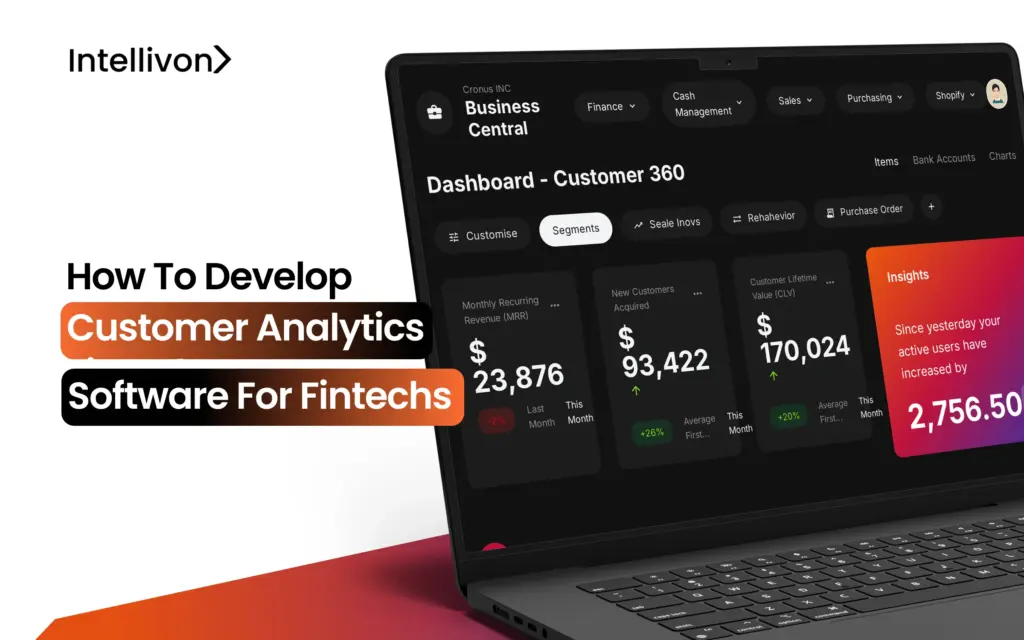
Customer analytics has moved from being a support function to becoming the strategic backbone of modern fintech growth. Legacy data systems and static dashboards can no longer keep pace with how customers transact across digital wallets, lending apps, and neobanks. Without real-time insights, fintechs risk higher churn, poor credit decisions, and compliance gaps that erode profitability. The market is evolving rapidly, with global fintechs adopting customer analytics software platforms that merge structured and unstructured data, apply predictive AI models, and deliver explainable insights across every customer interaction. These platforms drive personalized experiences, fraud prevention, and long-term customer lifetime value. At Intellivon, we specialize in helping enterprises develop fintech customer analytics platforms that are secure, compliance-ready, and scalable for the future. In this blog, we’ll explore what customer analytics means for fintechs, the features that matter, and how to build a solution that converts data into a competitive advantage. Key Takeaways of the Customer Analytics Market The global customer analytics market was valued at $14.57 billion in 2023 and is projected to reach $48.63 billion by 2030, growing at a robust CAGR of 19.2% from 2024 to 2030. This surge is fueled by rapid digital transformation, data proliferation, and enterprises’ need to deliver real-time, hyper-personalized engagement. AI-augmented self-service analytics democratize insights, enabling enterprises to operationalize analytics faster and at scale. Cloud-native analytics platforms lower total cost of ownership (TCO), making advanced analytics accessible for small- and medium-sized enterprises. Retail media networks and e-commerce expansion create fresh opportunities for data-driven personalization and deeper engagement. Integration of customer data platforms (CDPs) into marketing stacks drives seamless cross-channel campaign optimization. Strategic enterprise impact: analytics identifies churn causes, increases upsell/cross-sell rates, and boosts customer lifetime value. Banking, retail, and telecom are among the leading adopters, using real-time analytics and AI to transform engagement and reduce acquisition costs. Predictive analytics adoption has improved conversion rates and satisfaction scores, directly impacting revenue and profitability. Privacy-compliant analytics tools are now essential, balancing regulatory requirements with effective customer engagement strategies. In summary, the rapid growth of the customer analytics market underscores its value as a critical growth lever for enterprises. Organizations that harness predictive, AI-driven, and compliant analytics platforms are positioned not only to improve operational efficiency but also to secure stronger customer loyalty and sustainable revenue growth. What Is Customer Analytics Software in Fintech? Customer analytics software in fintech is the intelligence layer that transforms raw financial data into actionable insights. Unlike traditional BI systems, these platforms are built to handle real-time transaction streams, behavioral data, and compliance-bound information at scale. For fintechs, this shift is critical: customer analytics is no longer about understanding “what happened” last quarter but predicting “what happens next” in every customer journey. At its core, a fintech customer analytics platform integrates multiple data sources, such as digital wallets, banking APIs, KYC/AML systems, and even customer support interactions, into a unified data model. This enables enterprises to move beyond siloed views of customers and create a 360-degree profile that supports personalization, fraud detection, credit risk assessment, and regulatory reporting. The difference lies in speed and intelligence. Today’s fintech analytics software embeds AI and machine learning models that can segment users in real time, identify fraud patterns within milliseconds, and generate predictive scores for churn or default risk. Combined with visualization layers, compliance modules, and API-first design, these platforms give fintechs the ability to act on insights immediately, whether that means approving a loan, flagging a suspicious payment, or tailoring a financial product to a customer’s unique behavior. Key Features of Customer Analytics Software for Fintechs Fintechs operate in an environment where customer expectations, risk factors, and compliance requirements are constantly changing. To compete, customer analytics platforms must go beyond basic reporting and deliver real-time, AI-powered, compliance-ready insights. Below are the features that enterprises should prioritize when building or investing in customer analytics software for fintechs. 1. Real-Time Dashboards and Reporting Modern fintechs can’t afford to analyze yesterday’s data. Real-time dashboards allow decision-makers to monitor transactions, customer behaviors, and operational KPIs as they happen. This ensures immediate detection of fraud, personalized offers at the right moment, and rapid adaptation to market conditions. 2. Advanced Behavioral Segmentation Not all customers behave the same. Behavioral segmentation tools use transaction history, spending patterns, and engagement data to group users into micro-segments. Fintechs can then design targeted campaigns, personalize financial products, and improve retention strategies that speak directly to each group’s needs. 3. Predictive and Prescriptive Modeling Predictive analytics allows fintechs to forecast churn, default risk, or product adoption rates with accuracy. Prescriptive models go one step further by suggesting the best course of action, whether it’s adjusting loan terms, offering retention discounts, or flagging high-risk accounts for review. 4. Credit and Fraud Risk Analytics Fraudulent activity and credit risk are two of the largest threats in fintech. With AI-driven fraud detection and dynamic credit scoring models, platforms can instantly detect suspicious patterns and evaluate borrower risk in real time. This protects revenues while building trust with customers. 5. Compliance-Ready Data Management Every data point in fintech is tied to regulation. Compliance-ready data management systems ensure that analytics platforms adhere to PCI-DSS, GDPR, PSD2, SOC 2, and AML/KYC frameworks. Automated reporting and audit logs minimize the cost of compliance while keeping enterprises audit-ready. 6. Omnichannel Data Integration Customers interact across multiple touchpoints, such as mobile apps, websites, chatbots, and call centers. Omnichannel integration unifies this data to provide a single customer view. For fintechs, this means better product recommendations, seamless experiences, and consistent insights across departments. 7. Scalable Cloud-Native Architecture Fintechs grow fast, and analytics must scale with them. Cloud-native platforms not only reduce infrastructure costs but also ensure that data pipelines, AI models, and compliance modules can expand seamlessly as transaction volumes increase. The must-have features of customer analytics software for fintechs are about ensuring growth, compliance, and customer trust at enterprise scale. Real-time dashboards enable faster reactions, predictive models drive proactive decisions, and compliance-ready design keeps regulators satisfied. For fintech leaders, the right feature set transforms
Building an AI-Powered Credit Risk Analytics Tool
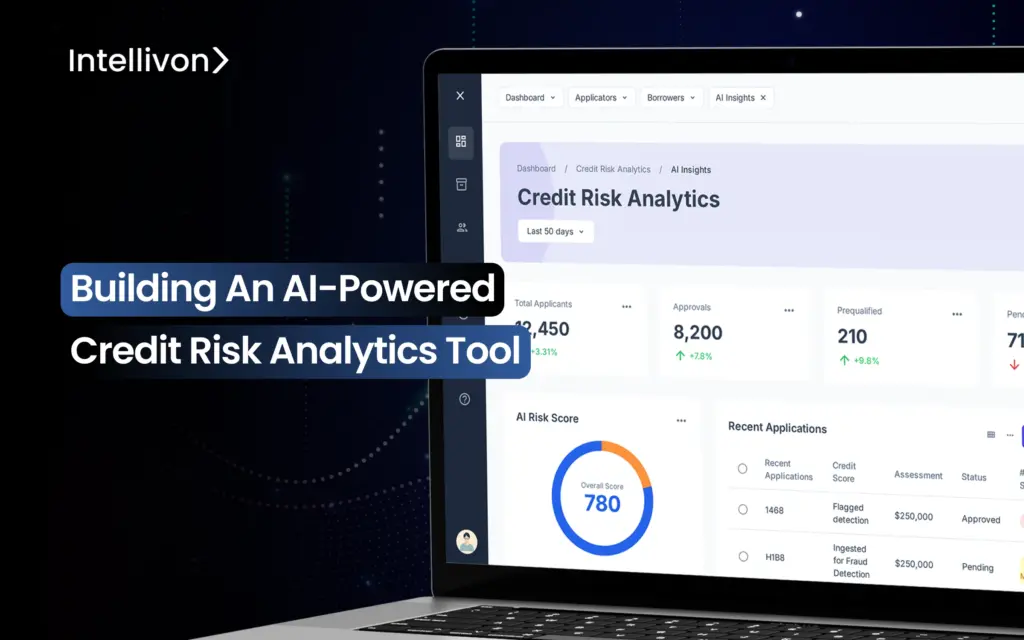
Credit risk is now a strategic enterprise risk, not a mere operational challenge. Traditional methods depend on outdated scoring models and siloed data, leaving institutions exposed to defaults, regulatory penalties, and stalled growth. As lending accelerates across retail banking, fintech, and corporate portfolios, the inability to evaluate risk in real time has become a barrier to profitability. The market is shifting fast, with global adoption of AI-powered credit risk platforms now seen as the way forward. These platforms process diverse datasets, generate explainable risk scores, and enable institutions to scale lending without compromising compliance. At Intellivon, we help enterprises build AI-powered credit risk analytics platforms that are secure, compliant, and future-ready. Each platform is designed to integrate seamlessly with existing systems, reduce portfolio risk, and open access to new lending opportunities. In this blog, we’ll explore what these platforms are, why they matter, and how we build them from the ground up as long-term strategic assets. Market Insights of Credit Risk Platforms The global Credit Risk Management Platform Market was valued at $9.2 billion in 2023 and is projected to reach $28.6 billion by 2033, growing at a CAGR of 12.1%. This growth is fueled by technology integrations such as AI, ESG factors, and alternative data. Key drivers include rising demand for regulatory compliance, improved risk data aggregation, greater accuracy in default prediction, and automation of credit processes. Enterprises using advanced platforms reduced default rates by up to 35% and improved borrower onboarding speed by 60% with automated scoring and workflows. In North America, 78% of banks use dedicated AI-powered credit risk tools, and Asian adoption is growing at a 16% CAGR. Real-time credit analytics platforms cut review times from days to minutes, accelerating loan approvals and enhancing customer experience. Institutions that modernized risk systems saw 25–30% drops in NPAs and 15% loan book growth within two years. Predictive AI and automation save up to 40% in compliance and reporting costs compared to legacy systems. Regulatory compliance is streamlined, with 3x fewer manual interventions required during audits. The next wave of platforms incorporates alternative data, machine learning, and ESG scoring, now demanded by over 60% of tier-1 lenders. This data highlights a rapidly expanding opportunity where AI-powered credit risk platforms are strategic necessities. Enterprises that invest early not only reduce exposure to defaults but also gain competitive speed, stronger compliance, and measurable growth. What Is an AI-Powered Credit Risk Analytics Platform? An AI-powered credit risk analytics platform is an enterprise-grade system designed to evaluate borrower risk in real time, across millions of data points. Unlike traditional scoring tools that rely heavily on outdated credit bureau data, these platforms combine financial history, behavioral patterns, market signals, and alternative data to generate predictive and explainable risk insights. A true enterprise-grade platform integrates seamlessly with loan origination systems, CRMs, ERPs, insurance underwriting engines, and payment networks. It serves as a central ecosystem where institutions can manage credit decisions, monitor compliance, detect fraud, and run portfolio stress tests, all from a single, secure environment. For modern financial institutions, this shift is more than technical. It transforms credit risk from a backward-looking calculation into a forward-looking strategy, enabling faster lending decisions, reduced defaults, and compliance-ready reporting. Key Features of an AI-Powered Credit Risk Analysis Platform An AI-powered credit risk analytics platform is a strategic system that reshapes how enterprises approach lending. Merging predictive intelligence, alternative data, and compliance-ready reporting into a single framework enables institutions to reduce risk exposure while scaling faster. Below are the features that set these platforms apart. 1. Real-Time Risk Scoring Traditional credit assessment workflows often take days, creating bottlenecks for both lenders and borrowers. A modern platform evaluates borrower risk instantly by analyzing financial history, spending behavior, and contextual data in real time. This immediate decision-making capability not only accelerates loan approvals but also enhances customer satisfaction. For enterprises, it means faster growth without increasing exposure to defaults. 2. Predictive Modeling Legacy systems focus on past performance, but predictive modeling looks ahead. By training machine learning models on diverse datasets, platforms can forecast which borrowers are likely to default months in advance. This gives risk teams the ability to intervene early, restructure terms, or adjust exposure. In practice, it transforms credit risk management from reactive firefighting into a proactive strategy. 3. Portfolio Stress Testing Economic conditions are rarely stable. Platforms include stress testing modules that simulate downturns, regulatory shifts, or liquidity crunches to see how portfolios will respond. By modeling scenarios such as interest rate hikes or market crashes, risk managers gain a clear view of vulnerabilities before they materialize. This capability helps enterprises prepare contingency plans and maintain resilience. 4. Alternative Data Utilization Millions of potential borrowers remain invisible to traditional bureau-based scoring. AI-powered platforms solve this by incorporating alternative data such as telecom records, utility bills, rental histories, and even digital transaction patterns. This approach not only broadens financial inclusion but also improves risk assessment accuracy for thin-file customers. For lenders, it means expanding into new markets with confidence. 5. Explainable AI Dashboards Regulators increasingly demand transparency in AI-driven decisions. Explainable AI dashboards show exactly why a borrower was approved or denied, breaking down the factors that influenced the score. This ensures auditability and builds trust with compliance teams, regulators, and customers. Instead of being a black box, the system becomes a transparent partner in risk management. 6. Fraud and Anomaly Detection Fraudulent applications and synthetic identities are sophisticated enough to bypass static rules. Platforms use anomaly detection, graph analytics, and behavioral monitoring to identify suspicious activity before it enters loan books. By reducing fraud at the source, enterprises protect both their portfolios and customer trust. This proactive defense is critical as fraud losses climb globally each year. 7. Seamless Integration Layer Enterprises can’t afford fragmented systems. With an API-first design, the platform integrates smoothly with core banking software, insurance underwriting systems, ERPs, and payment networks. This unified environment eliminates silos, enabling consistent risk evaluation across products and geographies. It ensures that every part of the institution

